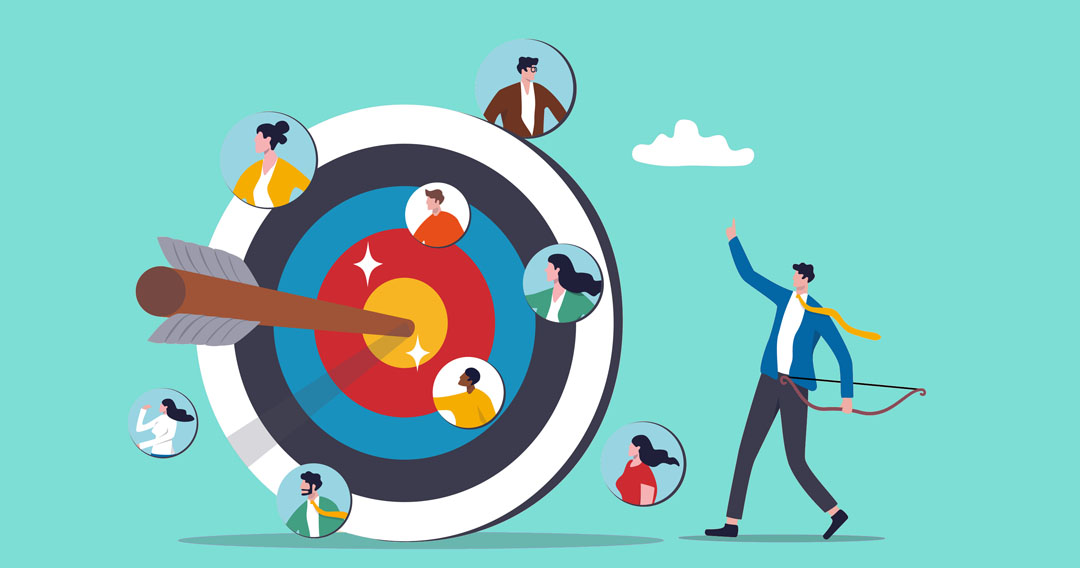What is Behavioral Marketing?
While traditional marketing used research to some extent to reach consumers and drive them to buy, there was still a lot of guesswork involved.
Data on customer behavior might give you a general idea of what a particular consumer might respond to, but that was about it. It was still up to marketers to make the rest of the jump on their own.
On the other hand, modern behavioral marketing is incredibly specific and very highly focused.
It involves targeting a particular lead based on the very detailed actions they take while browsing a website.
Relevant factors marketers consider include data from cookies, the customer’s search history, their browsing habits, and their IPs.
This information is used to create a highly nuanced portrait of each individual user. This, in turn, makes it easier to custom-tailor marketing efforts to the tune of outstanding results.
The more data an ad network receives, the more precise and relevant the resulting advertising becomes.

Why is Behavioral Marketing Important?
Today’s web users have many options to choose from when it comes to what they buy.
They don’t have the time or the attention span to waste on advertising that really isn’t relevant to them, so marketing accuracy is essential. Otherwise, they’ll be on to the next thing in a split second.
Behavioral marketing as a concept is more than just an effective technique when it comes to boosting your bottom line.
Here’s a closer look at some of the biggest reasons why it’s an integral part of any modern digital marketing strategy.
It helps you convert indecisive consumers
Plenty of customers click through to a website just to see what’s what and have a look around.
And often, even if they had no real intention of buying anything before, they’ll find that something catches their eye anyway.
Their behavior while on-site will reveal their interest, making it possible to use what’s learned about them to nudge them toward a successful purchase.
Practical examples of how this can work include showing personalized product recommendations to sweeten the pot or offering discounts and limited-time deals “just for them.”
How one marketer defines indecisive behavior may differ drastically from another’s, so it’s up to you to decide what metrics make the most sense to you.
Common examples include total time spent on your website, the number of pages viewed, or even a visitor’s search patterns.
It encourages better engagement with your website
Someone who visits your website may decide to abandon that visit at any time for any reason.
Sometimes people simply lose interest in whatever they were doing there and leave on a whim. Other times they’re simply distracted by something else vying for their time.
However, savvy marketers know that a dropped visit doesn’t necessarily mean a lack of interest in the products the visitor viewed.
Behavioral marketing gives companies the tools they need to retarget potential customers that showed interest in specific products (or even placed them in a shopping cart) before leaving a website.
This can be done by directly reminding them of the items they considered or otherwise re-engaging them and encouraging them to complete their purchase.
It helps augment average order size
Every time an existing or potential customer drops by your website for a look around, they generate a unique navigation trail.
They leave lots of valuable little clues behind that can easily be used to customize their experience better and increase the chances of them not only buying something but buying more than they might have otherwise.
Behavioral marketing can help you redirect interested consumers who’ve likely already decided to buy toward more terrific products that might strike their fancy.
These could be similar items or different items that perfectly complement something they’ve purchased before or may have in their cart to buy this time around.
How Does Behavioral Marketing Work?
As with other types of marketing, there’s a method and science to behavioral marketing. Here’s a look at how a typical campaign will play out from start to finish.
Data Collection
The data involved in behavioral marketing typically comes from multiple sources.
Yes, these sources include the company’s website and e-commerce platforms. However, they also include mobile apps, CRM systems, and many other automated systems that may be in place.
Types of data gathered could consist of (but aren’t necessarily limited to):
- Which demographics visitors belong to.
- How long they stay on-site and what pages they visit.
- Any log-in information they may have created.
- What they’ve purchased and when.
- Typical depth of content engagement.
Segmentation
Once the data collection phase is completed, it’s time to combine similar visitors into segments and sub-segments.
Again, many criteria might be used to differentiate one group of people from another, but they will almost always be based on behavior.
Many segment systems will contain groups separated by gender, age, or whether someone has purchased in the past.
But some groups may be for customers who love buying sweaters vs. sundresses or baked goods vs. cleaning supplies.
Data Application
Once each lead is successfully organized into one or more groups, it’s time to start crafting campaigns targeted to appeal to each unique segment.
The more specific the segment, the more detailed and relevant any resulting advertising is likely to be.
Not only does stellar accuracy help you make sales, but it helps personalize the experience for the user, making them feel valued and catered to.
Follow-up and assessment of each campaign result is an integral part of this stage, as well. After all, even a great strategy can be made better next time.
ypes of Behavioral Marketing
These days, behavioral marketing is everywhere you go online, from your favorite social media platforms to news outlets and Google search results.
In fact, you probably see it in action so often, you hardly notice it anymore. Here are some examples of common types to know.
Email Marketing
Suppose you’ve received an email from a business about an abandoned shopping cart you left at their web store or a couple of items you may have been checking out.

In that case, you’re already very familiar with this type of behavioral marketing. Specific customer behaviors trigger relevant emails in a similar manner.
For example, let’s say a customer leaves a full shopping cart behind. They may receive an initial email about an hour afterward, encouraging them to complete their purchase.
If that fails to get results, they might receive others a day or two later, perhaps with a discount code included to help sweeten the pot.
Social Media Ads
Any time you browse social media platforms like Facebook, Twitter, or Instagram these days, the ads that fly through your newsfeed are likely eerily relevant.
If they’re not directly relevant to you, they likely are to someone else in your family or household.
Social media targeting is modern behavioral marketing at its best.
It can be used to drum up local business, encourage return visits to favorite websites, or interest potential leads in services similar to others they’ve already shown interest in.
Google Ads
Google is one of the undisputed kings of data collection, and their search and display ads are proof positive these days.
For example, let’s say a customer in the market for a new laptop decides to start the shopping process with a good, old-fashioned Google search.
They’ll get a nice page full of relevant search results with a bank of shopping ads for laptops right at the top.
If the person decides to interact with those ads without also making a purchase, they’ll likely see more of the same hanging out on other sites they visit for a while.












Replies to This Discussion